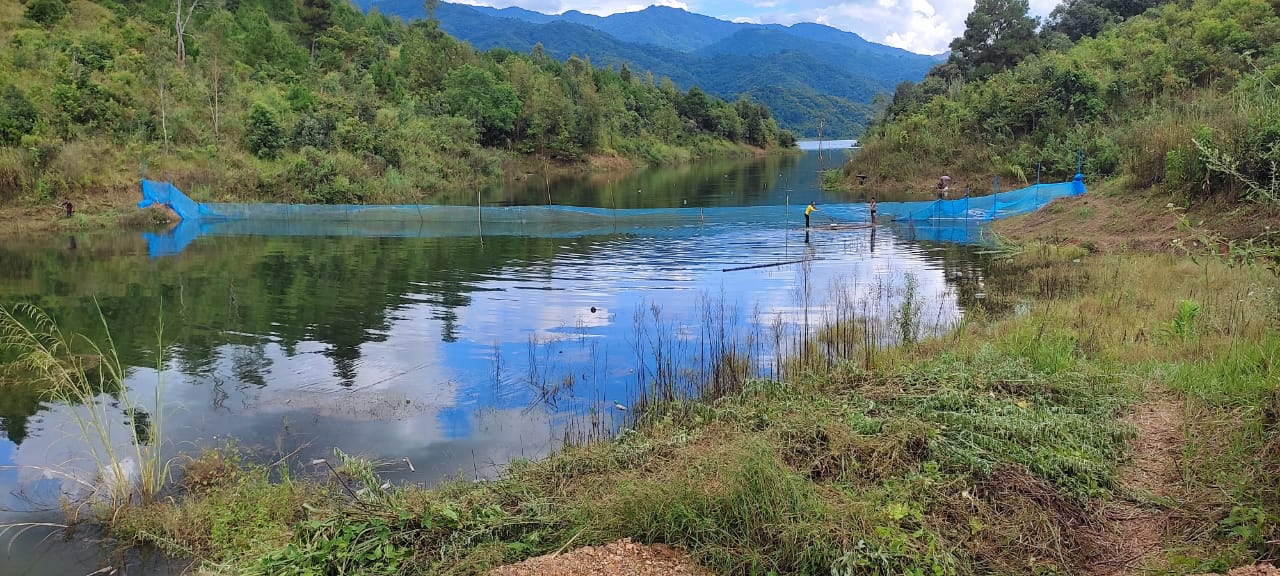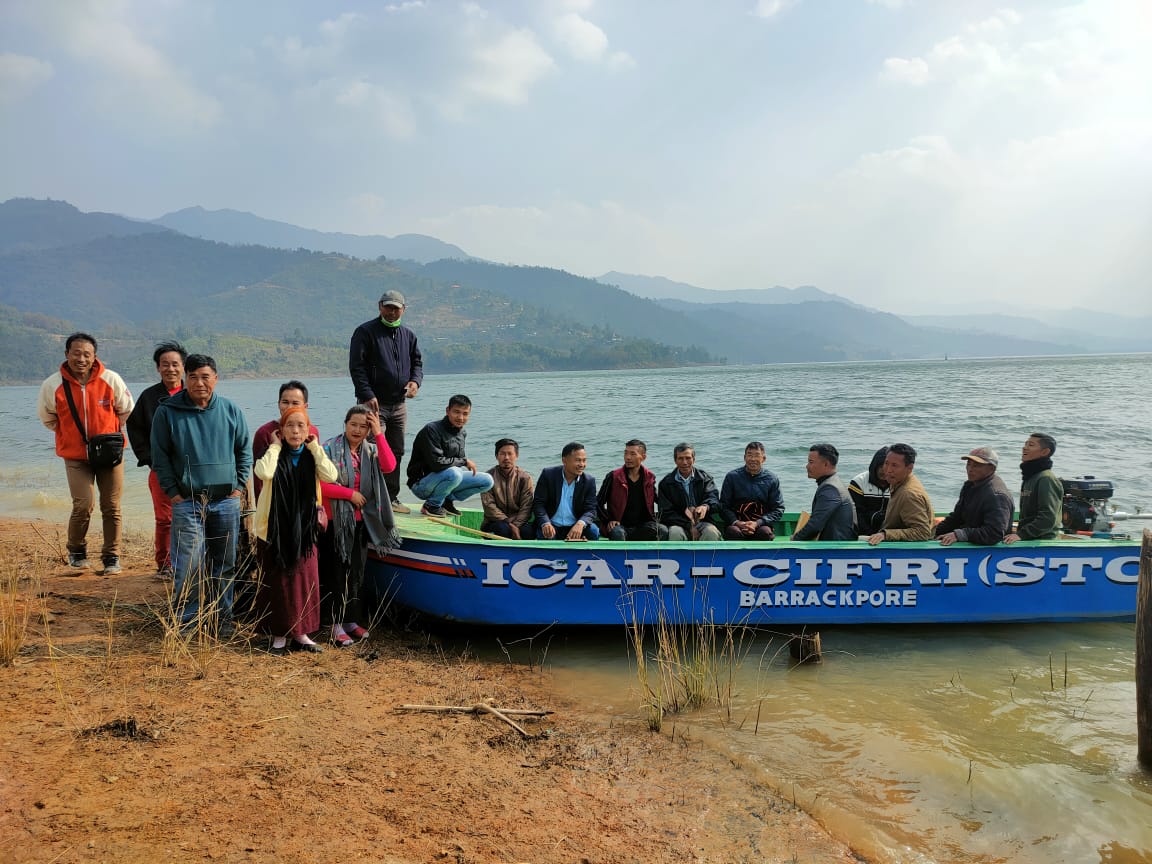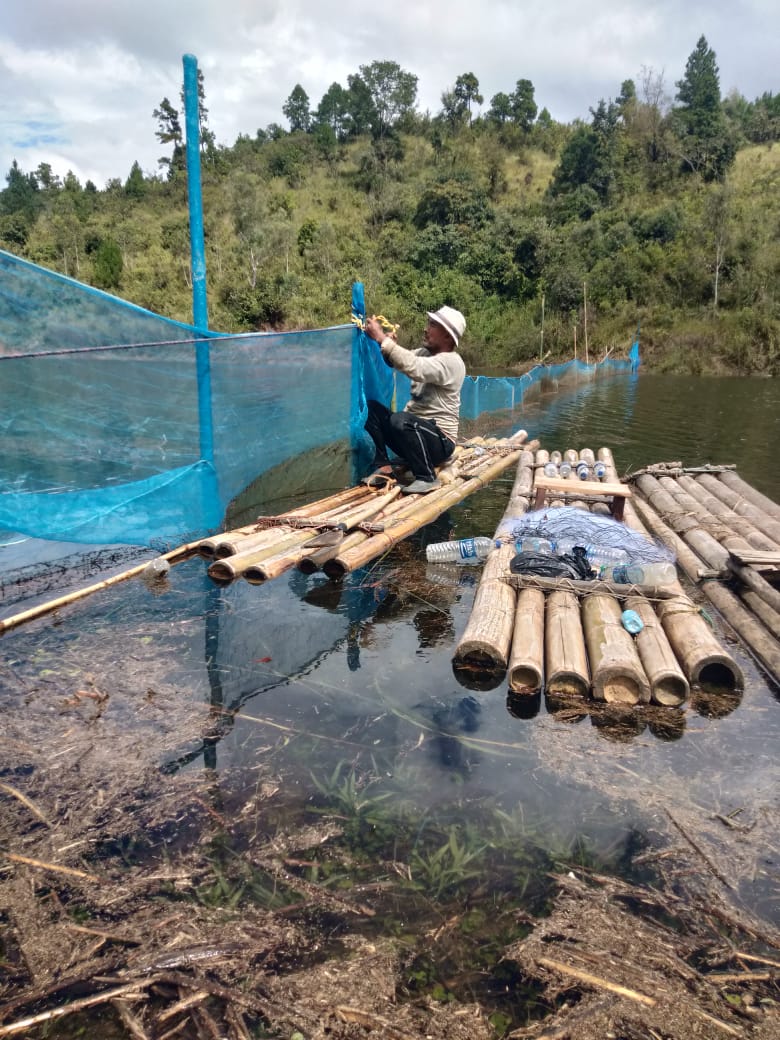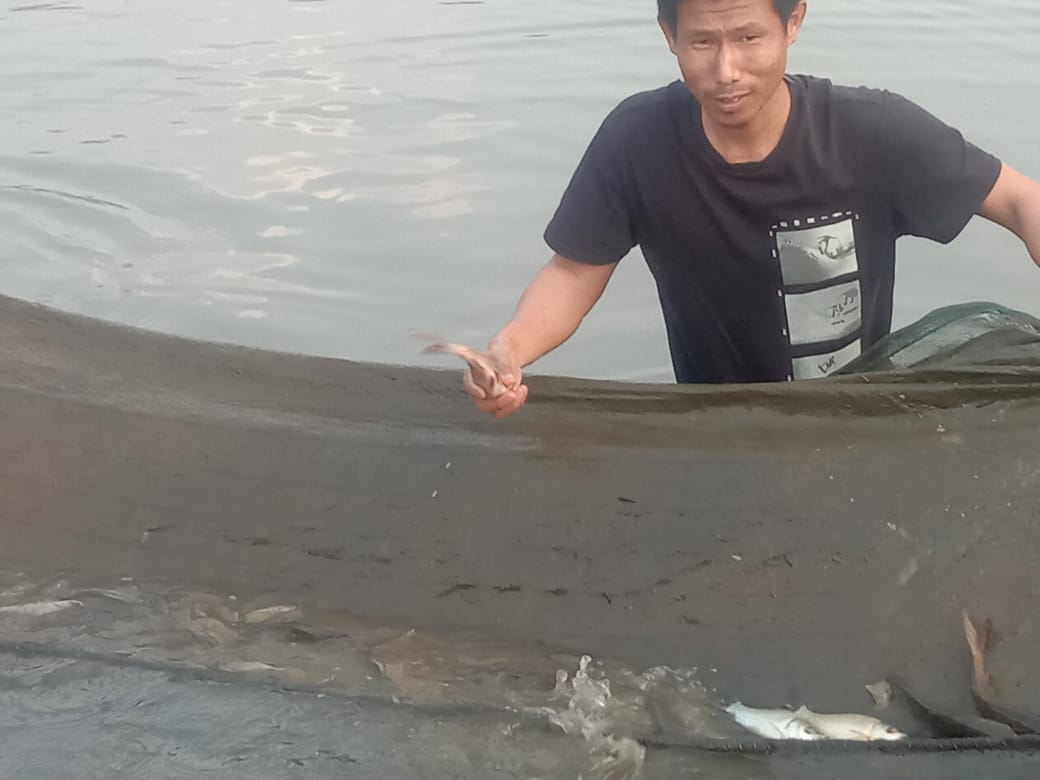Overview
Publications
Recruitment
Intranet
CIFRI Corners'
Manipur state is situated in the easternmost corner of India and about 41% of the state’s population is Scheduled Tribe. Agriculture is the mainstay of the state's economy contributing 50-60% to the state GDP. Manipur has several water bodies in the form of lakes, wetlands, ponds, water-logged areas, rivers/streams, and reservoirs; however, only 32.94% of the total potential water areas are so far under fisheries development. More than 95% of the population of Manipur consumes fish. Despite the state having good fish production potential of its water resources but has to import fish from other states of India.
The Mapithel dam (also known as the Maphou dam), is located at Kamjong district of Manipur state in North-East India. The Government of Manipur’s Irrigation and Flood Control Department (IFCD) undertook the project in 1980. The medium reservoir is the largest in the state with a water spread area of 1100 hectares. According to official figures, the dam construction had submerged an area of 1285 ha. The dam has displaced over 12000 people (1600 households of 16 villages) while an estimated 777.34 ha of paddy fields, 110.75 ha of the homestead, 293.53 ha of jhum land, and 595.1 ha of forest land have been submerged by the accumulated water of the dam (IFP, 2018). The primary occupation of the displaced tribal populace was agriculture, due to the submergence of land they are compelled to shift to other occupations post-reservoir formation. All the population affected by the reservoir construction belongs to the Tangkhul tribe. The displaced population formed a cooperative society named “The Mapithel Dam Affected Fishery Co-operative Society” and registered with 370 members in November 2016. No fish was stocked in the reservoir to date by the existing society except on one occasion by the fisheries department, Govt. of Manipur, due to financial constraints. As fishing is the primary source of livelihood for the displaced people in the area, fish stock enhancement in the reservoir is sine qua non for facilitating sufficient fish catch for the fisher from the reservoir.
To support the livelihood of the displaced tribal populace of the reservoir, ICAR-CIFRI has given two ICAR-CIFRI Pen HDPE ® (pen of 0.1 ha size) along with 50,000 fish seeds, 2 tons of pelleted feed (CIFRI CAGEGROW ®) for raising fish as a stocking material for reservoir fisheries enhancement. Apart from this, a motorized FRP boat of 10-meter overall length was also given to the society by ICAR-CIFRI. The programme’s main objective was to improve the livelihood of the dam-affected tribal population through a fisheries enhancement programme. ICAR-CIFRI had trained selected 14 tribal fishers from this reservoir at the Institute headquarters on “Reservoir fisheries management for production enhancement’ during 22 - 28 July 2022, before the initiation of the pen culture activity in the reservoir, following which a mass awareness programme was conducted at Ramrei village, Mapithel Reservoir site to raise the awareness among the fishers of reservoir fisheries management.














